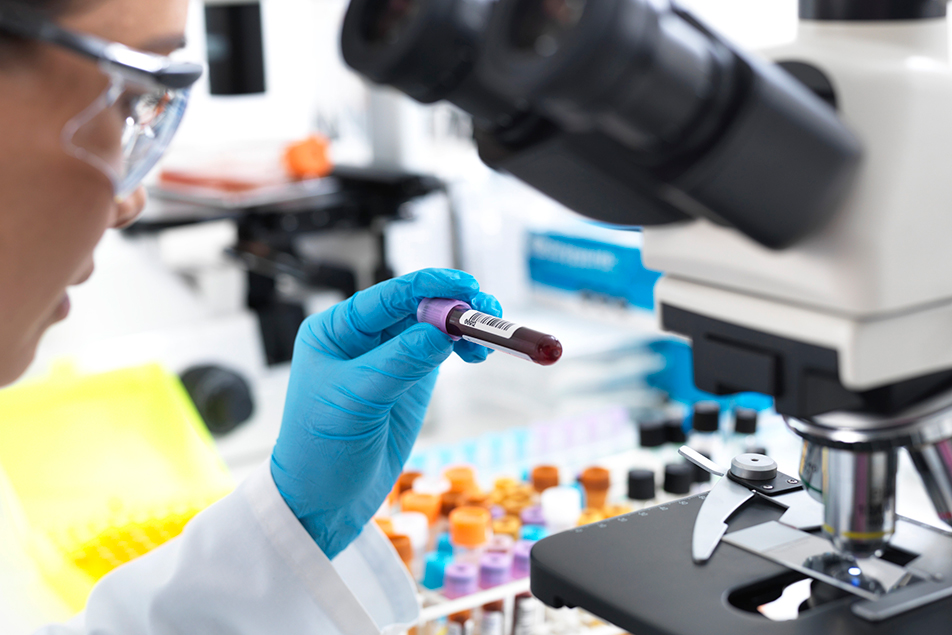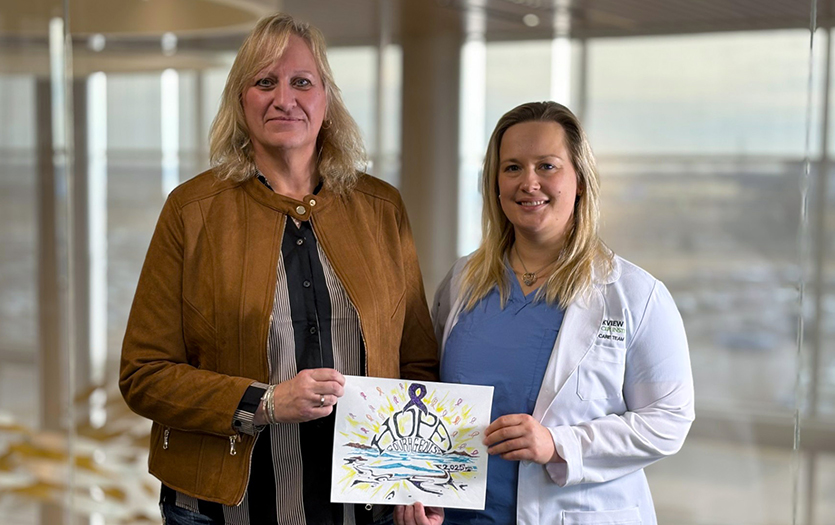
Blood cancers account for about 10 percent of all cancer diagnoses in the U.S. each year. To shine a light on the subject, Robert Manges, MD, Parkview Cancer Institute, delves into what blood cancers are, the most common types and the treatment options available to patients.
What are blood cancers?
In general, cancer is a disease where some of the body’s cells grow uncontrollably. The excessive production of white blood cells in the bone marrow can lead to blood cancers.
What is a hematologist, and why would someone need to see one?
A hematologist is a doctor who deals with blood diseases. For example, while I see many blood cancers, I also see patients with benign disorders like iron deficiencies, anemia, blood count abnormalities, white blood cells, red blood cells, platelets, etc. Typically, I see patients referred to me from a primary care provider or the emergency department (ED).
How many different types of blood cells do we have in our body?
We have three main types of blood cells in our bodies. They include the following:
- White cells: These are part of your immune system and help the body fight infection. There are several types of white blood cells, but a few can include neutrophils, lymphocytes, monocytes.
- Red blood cells: Made in the bone marrow, they carry oxygen to the body’s tissues. Often, low on red blood cells could be anemic and may feel a little tired.
- Blood platelets: Also called thrombocytes, blood platelets are small pieces of cells that are vital for normal blood clotting when you get a cut or a scrape. If they are too low, it can result in bruising or bleeding.
What are the most common types of blood cancers?
We usually break it down into three major categories:
- Leukemia: This type of cancer is usually found in the blood or bone marrow and caused by the rapid production of white blood cells. The abnormally large number of white blood cells affects the body’s ability to fight infection and the bone marrow’s capacity to make red blood cells and platelets.
- Lymphoma: This blood cancer affects the lymphatic system, resulting in lymph node enlargement and abnormal lymph tissue. These abnormalities can turn into cancerous cells, which impair your immune system.
- Myeloma: This is a cancer of the plasma cells within the bone marrow, which are infection-fighting, immune-producing cells that can cause other problems that lead to this disease. Different from other cancers, Multiple Myeloma is a whole-body condition. It doesn’t just affect the lymph nodes. It can damage the bones, immune system, kidneys, red blood cell count, etc.
How do blood cancers differ from tumorous cancers?
Well, it’s a bit of a different situation. Currently, there are no standard screening methods for blood cancers. If you feel well, you're going to the doctor for your annual or preventative check-ups. Typically, a complete blood count (CBC) isn't always an automatic part of that evaluation unless there’s a reason like fatigue or anemia. So, it's a low threshold for checking, and sometimes that's where the diagnosis begins, with the blood count in the primary care office.
What can a blood test show you?
Typically, a blood test gives us, at the very least, a strong suspicion of something, which is where it begins. So, many times, either in the emergency department (ED) or the primary care office, they may have an abnormal blood count. For example, let’s say a person’s white blood cell, red blood cell, hemoglobin and platelet counts are low. They get funneled to us for another look at their results and the second level of testing. Sometimes, testing includes a bone marrow examination, which is just an evaluation and something we do every day. It’s an outpatient procedure that is very quick and easy. This test is where we often get a definitive diagnosis.
Who is at risk or more prone to blood cancers?
In general, the older you are, the more chance you have of getting an aberration or mutation that leads to these diseases. There are a few exceptions to that rule, but we see the highest incidence rates of people in their 60s and older. However, most cases get evenly distributed among both men and women. There isn’t one gender that is more affected than the other.
As for ethnicities, we see a slightly higher incidence rate of multiple myeloma in African American populations, but it’s very treatable. Additionally, there may be some genetic influence, not as much as breast cancer, and certain mutations that cause these abnormalities.
What are some warning signs and symptoms?
The signs and symptoms of blood cancers can vary depending on the disease and individual. Typically, symptoms can include:
- Fever
- Chills
- Fatigue
- Weakness
- Bruising (occasionally)
- Bone and/or joint pain
- Weight loss
Some people may also experience swelling of their lymph nodes. If it’s a couple of centimeters or more, it’s worth getting it checked out. Anemia is also common in some blood cancers.
What are the treatment options for blood cancers?
Treatment options depend on the type of blood cancer. However, in broad terms, the treatment for leukemia, lymphoma and myeloma are similar. Common treatments can include:
- Chemotherapy
- Radiation therapy
- Targeted therapies
- Immunotherapy
- Stem cell transplant
- Blood transfusion
Surgery is rarely a treatment but instead utilized as a diagnostic tool. For example, if you have an enlarged lump in your neck, you may need it removed or biopsied so we can take a closer look at it. In that sense, surgery can be a part of a patient’s treatment plan.
Additionally, patients now have the option of being treated with non-chemotherapy. They can have a multi-drug regimen that’s very effective and doesn’t include any chemotherapy. That’s not to say there are no side effects. There may still be side effects, but many find them more manageable.
Helpful resources
For more information on the Parkview Cancer Institute Hematology Care Team, please visit our page.



